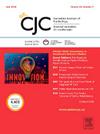临床实践中的运动和健康量化:为什么和如何我们要去哪里?
IF 5.8
2区 医学
Q1 CARDIAC & CARDIOVASCULAR SYSTEMS
引用次数: 0
摘要
运动和健康量化越来越被认为是临床实践的关键组成部分,特别是在预防心脏病学中。本文探讨了临床环境中运动量化的多方面重要性,包括预防保健、成本效益、心理社会效益、治疗计划和监测进展。量化锻炼习惯使临床医生能够评估风险概况,制定量身定制的干预措施,并监测患者的进展。讨论了运动量化的方法。在预防心脏病学中,强调遵守美国心脏协会、欧洲心脏病学会和加拿大心血管学会等组织的指导方针,特别关注高强度间歇训练和物理治疗师/运动学家的核心作用。特殊人群,如周末战士,“肥胖和健康”的概念,运动员,以及那些有过度训练综合症风险的人,都被考虑在运动处方中。运动和健身量化的未来方向包括整合先进的可穿戴技术、个性化医疗、远程医疗以及推广活跃、可步行的社区。通过激励、行为改变技术、以患者为中心的方法以及持续的监测和反馈,行为科学的结合被强调为一个缺失的组成部分,可以增强对锻炼方案的长期坚持。这种综合的方法旨在通过个性化的、基于证据的有效和可持续的运动干预来优化心血管健康和整体健康。本文章由计算机程序翻译,如有差异,请以英文原文为准。

Exercise and Fitness Quantification in Clinical Practice: Why and How; and Where Are We Going?
Exercise and fitness quantification is increasingly recognized as a critical component in clinical practice, particularly within preventive cardiology. In this article we explore the multifaceted importance of exercise quantification in clinical settings, addressing preventive care, cost-effectiveness, psychosocial benefits, treatment planning, and monitoring progress. Quantifying exercise habits allows clinicians to evaluate risk profiles, prescribe tailored interventions, and monitor patient progress. The methodologies for exercise quantification are discussed. In preventive cardiology, adherence to guidelines from organizations such as the American Heart Association, the European Society of Cardiology, and the Canadian Cardiovascular Society is emphasized, with particular focus on high-intensity interval training and the central role of physical therapists/kinesiologists. Special populations, such as weekend warriors, those reflecting the "fat and fit" concept, athletes, and those at risk of overtraining syndrome, are considered in prescribing exercise. Future directions in exercise and fitness quantification include the integration of advanced wearable technology, personalized medicine, telemedicine, and promotion of active, walkable communities. The incorporation of behavioral science is highlighted as a missing component that can enhance long-term adherence to exercise regimens through motivation, behavior change techniques, patient-centered approaches, and continuous monitoring and feedback. This comprehensive approach aims to optimize cardiovascular health and overall well-being through individualized, evidence-based exercise interventions that are both effective and sustainable.
求助全文
通过发布文献求助,成功后即可免费获取论文全文。
去求助
来源期刊

Canadian Journal of Cardiology
医学-心血管系统
CiteScore
9.20
自引率
8.10%
发文量
546
审稿时长
32 days
期刊介绍:
The Canadian Journal of Cardiology (CJC) is the official journal of the Canadian Cardiovascular Society (CCS). The CJC is a vehicle for the international dissemination of new knowledge in cardiology and cardiovascular science, particularly serving as the major venue for Canadian cardiovascular medicine.
 求助内容:
求助内容: 应助结果提醒方式:
应助结果提醒方式:


